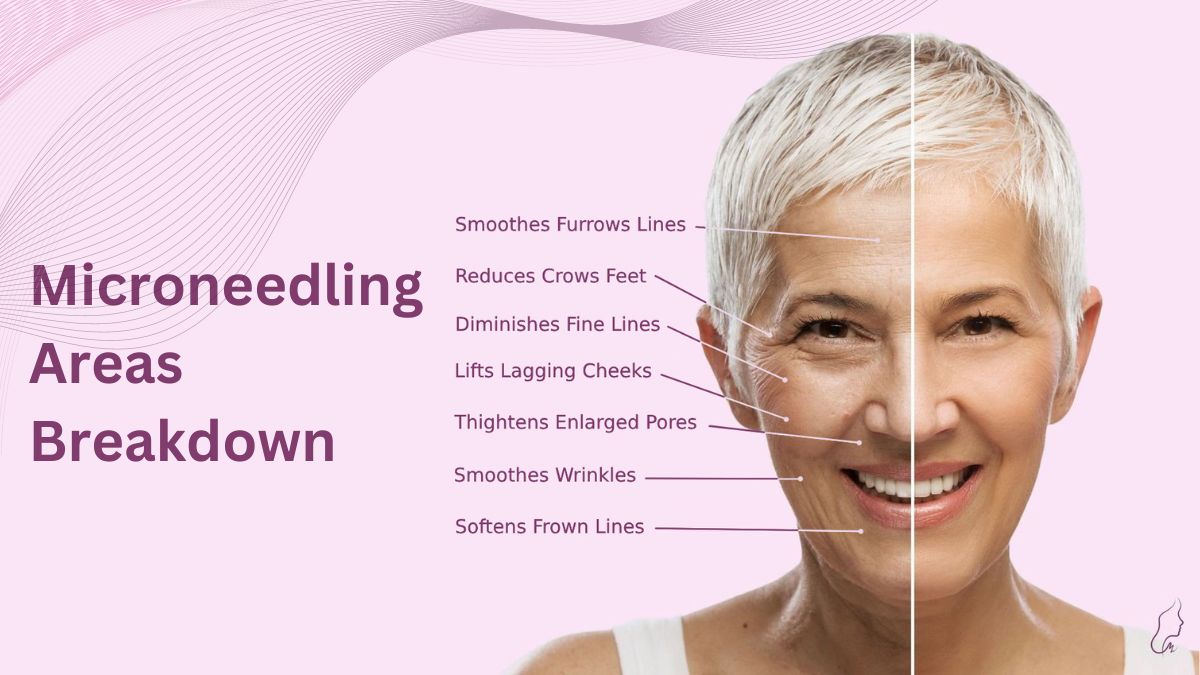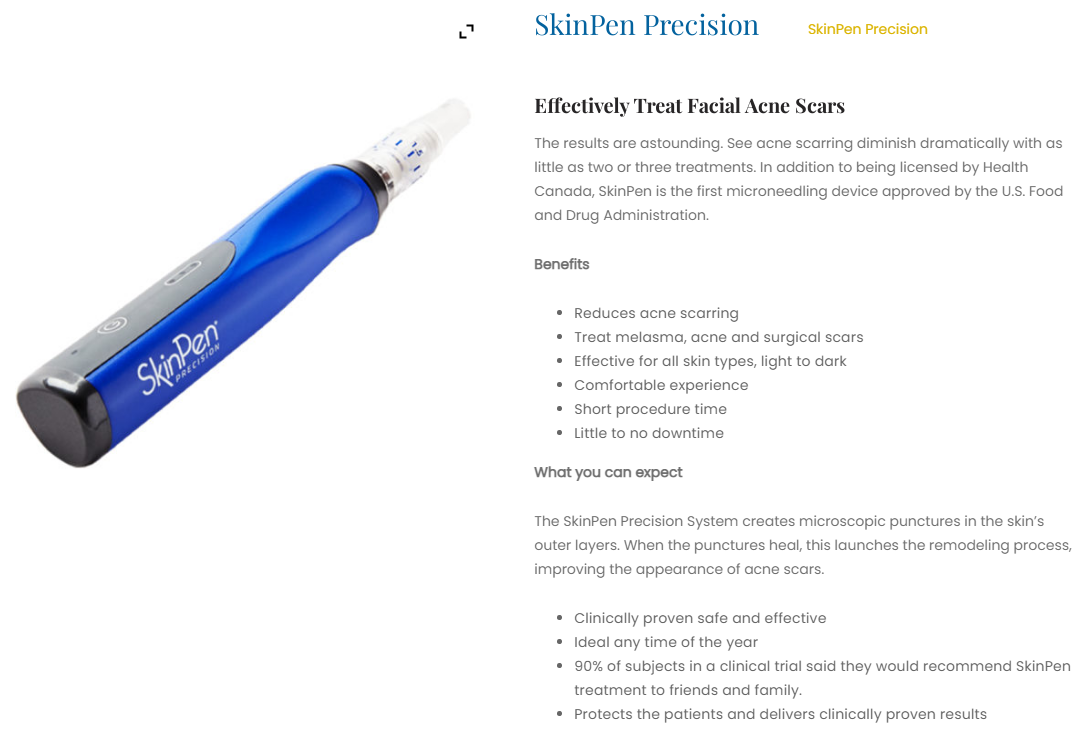What is Microneedling?
Minimally invasive skin treatment using fine needles for rejuvenation
Microneedling is a minimally invasive cosmetic procedure designed to improve your skin’s texture, tone, and overall appearance.
The procedure can be performed on the face, neck, hands, and other parts of the body. Depending on the specific concerns being treated, microneedling sessions can vary in depth and intensity. Let’s dive into it!
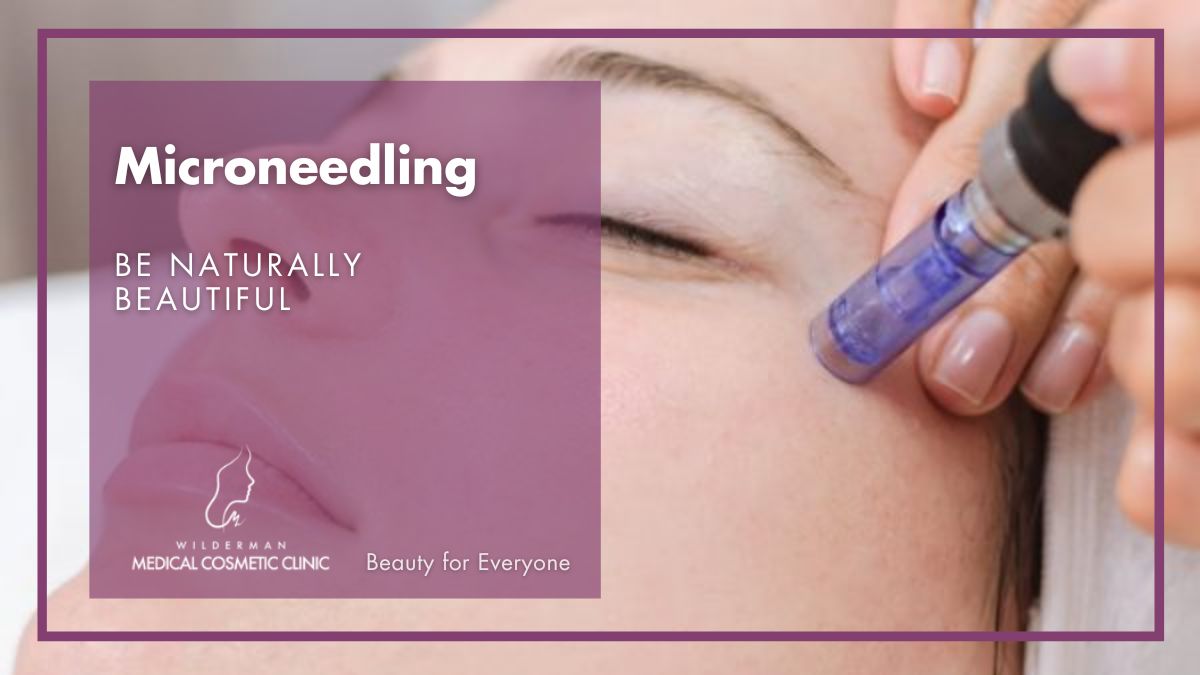
Get immediate answers to your questions about treatment options, costs, expected outcomes, and more.
- Expert Diagnosis
- Customized Treatment Plans
- No Obligation
- Comfort and Privacy
- Immediate Answers
Microneedling is a versatile treatment used to address various skin concerns, including fine lines, wrinkles, acne scars, enlarged pores, and uneven skin texture.
During microneedling, a device with fine needles is used to create controlled micro-injuries on the skin’s surface. These tiny punctures stimulate the body’s natural healing process, promoting collagen and elastin production, essential proteins for maintaining youthful skin.
One of the significant advantages of microneedling is its ability to achieve noticeable improvements with minimal downtime. Microneedling is considered safe when performed by a trained and qualified practitioner.
We use SkinPen Precision, which is FDA and Health Canada-approved, in our Medical Cosmetic Clinic.
It is essential to follow post-procedure care instructions provided by the healthcare professional to optimize results and minimize the risk of complications. Multiple sessions spaced several weeks apart are often recommended to achieve the desired outcome, as the gradual collagen remodeling process continues to enhance the skin’s appearance over time.
Microneedling Areas Breakdown
Are you a good candidate?
Microneedling is typically safe, but it may not be suitable for individuals who:
- Have active skin infections: If you have any active skin infections, microneedling can potentially spread the infection and worsen the condition.
- Are prone to keloid scarring: People who tend to develop raised, thick scars (keloids) should avoid microneedling, as it may exacerbate this tendency.
- Have used certain medications: Some medications can affect skin healing and make microneedling risky. It’s important to discuss your medications with a specialist.
- Have uncontrolled diabetes: Uncontrolled diabetes can impair the body’s natural healing process, making microneedling less effective and possibly increasing the risk of complications.
- Are pregnant or breastfeeding: It’s generally recommended to avoid microneedling during pregnancy and breastfeeding due to potential risks, although this should be discussed with a healthcare provider.
- Have skin conditions like rosacea or eczema: Microneedling can irritate the skin, so individuals with certain skin conditions might need to avoid the procedure to prevent the worsening of their condition.
- Have open wounds or recent skin surgery or radiation treatment: Microneedling should not be performed on areas with open wounds, cuts, or recent skin surgery or radiation treatment sites.
For whom would this treatment be suitable?
Microneedling is generally suitable for individuals looking to address concerns such as:
- Fine lines and wrinkles: Microneedling helps stimulate collagen production, reducing the appearance of fine lines and wrinkles.
- Acne scars: It can improve the texture and appearance of acne scars by promoting skin regeneration.
- Uneven skin tone and texture: Microneedling can enhance overall skin tone and texture, providing a smoother complexion.
- Enlarged pores: By promoting collagen, microneedling can make pores appear smaller and less noticeable.
- Stretch marks: It can help fade the appearance of stretch marks by encouraging skin regeneration in the affected areas.
- Sun damage: Microneedling can address sun-damaged skin, promoting healthier and more radiant skin.
- General skin rejuvenation: It is used for overall skin rejuvenation, giving the skin a fresher, more youthful look.
However, it’s essential for individuals considering microneedling to consult with a qualified practitioner. They can assess your specific concerns and determine if microneedling is the right option for you.
Benefits of Microneedling
Microneedling offers several benefits for the skin, including:
- Non-invasive procedure: It is a minimally invasive procedure with little to no downtime, making it a convenient option for individuals seeking skin rejuvenation without significant recovery periods.
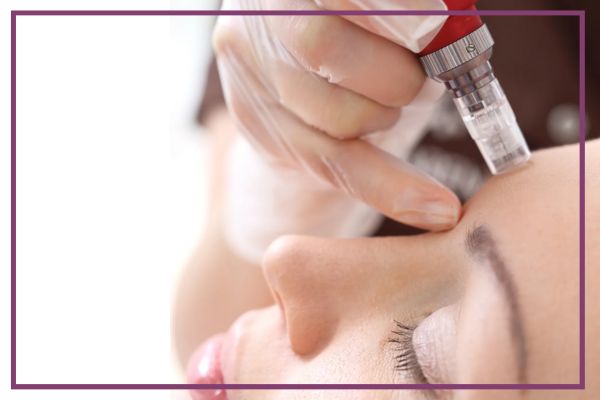
- Safe for various skin types: Microneedling is generally safe for all skin types and colors, making it accessible to a broad range of individuals.
- Boosted absorption of skincare products: Microneedling creates micro-channels in the skin, enhancing the absorption of topical products, and allowing for better penetration of serums and creams.
- Natural-looking results: The gradual collagen production and skin regeneration process result in natural-looking improvements over time, providing a refreshed and rejuvenated appearance.
Eager to rejuvenate your skin with Microneedling?
Get a free customized treatment plan session today and start your journey to flawless skin. Book a Personalized Treatment Plan Session “For Free”
What are the precautions that need to be taken?
When considering microneedling, it’s essential to follow these precautions to ensure a safe and effective procedure:
- Consultation: Schedule a consultation with a qualified and experienced practitioner. Discuss your medical history, current medications, and expectations from the procedure.
- Avoid sun exposure: Limit sun exposure and use sunscreen before and after the procedure to minimize the risk of complications and promote proper healing.
- Discontinue certain products: Stop using certain skincare products, such as retinoids and exfoliating agents, in the days leading up to the procedure, as they can increase skin sensitivity.
- Avoid blood thinners: If applicable, avoid blood-thinning medications or supplements for a specified period before the procedure to reduce the risk of bruising.
- Hydrate and moisturize: Keep your skin well-hydrated and moisturized before the procedure to promote optimal healing and recovery.
- Post-procedure care: Follow the post-procedure instructions provided by your healthcare provider diligently. This may include avoiding vigorous exercise, hot showers, and certain skincare products for a few days after microneedling.
- Avoid touching your face: Refrain from touching your face unnecessarily, especially with unwashed hands, to prevent infections.
- Attend follow-up appointments: Attend any scheduled follow-up appointments to monitor your skin’s progress and address any concerns promptly.
- Be patient: Understand that the results of microneedling develop gradually over several weeks to months. Avoid expecting immediate or drastic changes and be patient as your skin heals and rejuvenates naturally.
Are there any side effects?
Yes, like any cosmetic procedure, microneedling can have some side effects.
While these are usually mild and temporary, it’s important to be aware of them:
- Redness: After the procedure, it’s common to experience redness, similar to a mild sunburn. This usually subsides within a few days.
- Swelling: Some swelling might occur, especially in areas where the skin is thinner, such as around the eyes. Swelling typically diminishes within a few days to a week.
- Tenderness: The treated area might be tender to the touch for a few days following the procedure.
- Bruising: Bruising can occur, particularly if you are prone to bruising or if you are taking blood-thinning medications or supplements.
- Dryness and flakiness: The treated skin might become dry and flaky as it heals. It’s essential to keep the skin moisturized during the healing process.
- Peeling: Some peeling or shedding of the skin can occur as the old, damaged skin is replaced by new, healthier skin.
- Itching: Itching is a common side effect during the healing process. Avoid scratching to prevent irritation.
- Infection: While rare, there is a risk of infection. It’s crucial to keep the treated area clean and follow post-procedure care instructions to minimize this risk.
- Pigment changes: In individuals with darker skin tones, there is a slight risk of temporary pigment changes, either darkening (hyperpigmentation) or lightening (hypopigmentation) of the skin. This risk is minimized with proper sun protection.
- Cold sores: Microneedling can trigger cold sore outbreaks in individuals prone to them. Inform your practitioner if you have a history of cold sores.
- Scarring: Although rare, improper microneedling techniques or inadequate aftercare can lead to scarring.
How does Microneedling work?
Stimulates collagen via controlled skin micro-injuries for rejuvenation
Microneedling involves stimulating the skin’s natural healing processes to rejuvenate and improve its appearance. During the procedure, fine needles penetrate the skin, creating controlled micro-injuries.
These micro-injuries trigger the body’s wound-healing response, producing new collagen and elastin fibers. Collagen and elastin are essential proteins responsible for skin elasticity, firmness, and overall youthful appearance.
As the skin heals from these micro-injuries, it undergoes a remodeling process, replacing old, damaged skin cells with new, healthier ones.
This regeneration leads to improved skin texture, reduced wrinkles, diminished scars, and a more even complexion. Additionally, the microchannels created during microneedling enhance the absorption of topical skincare products, making them more effective in promoting skin health.
Overall, microneedling encourages the skin to naturally repair and rejuvenate, resulting in a fresher, smoother, and more youthful-looking complexion. The controlled nature of the procedure ensures safety while promoting significant improvements in skin quality.
In summary
Microneedling, with its ability to harness the skin’s natural healing processes, stands as a powerful tool in the realm of non-invasive cosmetic treatments. This procedure, promoting collagen and elastin production, offers significant improvements in skin texture, wrinkles, and scars, leading to a fresher and more youthful complexion.
However, it is crucial to emphasize that a certified specialist should be consulted.
Their expertise ensures the procedure is tailored to individual needs, guaranteeing not only the efficacy of the treatment but also its safety. With proper aftercare and the guidance of a qualified professional, microneedling becomes a transformative journey toward enhanced skin quality, boosting confidence and rejuvenating one’s appearance.
Experience the magic of Microneedling firsthand
Secure your complimentary FREE Personalized Treatment Plan Session now and discover the key to smoother, younger-looking skin. Get a Personalized Plan Session “For Free”
FAQ about Microneedling
What can I expect during the treatment?
During a microneedling treatment session, you can expect the following steps:
- Consultation: Your healthcare provider will begin by discussing your concerns, goals, and medical history. They will assess your skin and determine the appropriate microneedling depth and settings tailored to your specific needs.
- Cleansing: The treatment area will be cleaned thoroughly to remove any makeup, oils, or debris from your skin.
- A numbing cream (optional): Depending on your pain tolerance and the depth of the procedure, a numbing cream might be applied to the treatment area to minimize discomfort.
- Microneedling: Once your skin is numb (if applicable), the microneedling device, which contains fine needles, will be gently moved over the skin. The device creates controlled micro-injuries on the skin’s surface. These tiny punctures stimulate the body’s natural healing response and promote collagen and elastin production.
- Post-procedure serums: After microneedling, specialized serums or growth factors might be applied to the skin. The microchannels created during the procedure enhance the absorption of these products, promoting skin healing and rejuvenation.
- Duration: A typical microneedling procedure takes about 30 minutes to an hour, depending on the size of the treated area and the specific concerns being addressed.
What can I expect after the treatment?
- Redness: After the procedure, your skin will likely be red, similar to a mild sunburn. This redness is a common and expected part of the healing process.
- Post-procedure care instructions: Your healthcare provider will provide specific post-procedure care instructions. These instructions may include avoiding sun exposure, refraining from using certain skincare products, and gentle cleansing practices.
- Recovery: Most people experience some redness, swelling, and tenderness immediately after the procedure. These effects typically subside within a few days, but the exact duration can vary based on the depth of the microneedling and individual skin sensitivity.
- Follow-up: Depending on your specific concerns and treatment plan, your healthcare provider might recommend a series of microneedling sessions spaced several weeks apart for optimal results.
Is it painful?
Microneedling is generally tolerable for most people, but it can cause some discomfort. To minimize pain, a numbing cream is often applied to the skin before the procedure.
The sensation during microneedling is often described as a mild prickling or stinging feeling. The depth of the needles and individual pain tolerance can influence the level of discomfort experienced. Most individuals find the procedure manageable and are willing to undergo it for the promising results it offers.
At our clinic, your comfort is paramount. We provide a nitrous oxide delivery system that allows you to have control. Using a mouthpiece, you can regulate the amount and frequency of nitrous oxide delivered. This 50/50 gas mixture of nitrous oxide and oxygen ensures maximum relaxation and minimal discomfort.
Known as laughing gas, nitrous oxide reduces anxiety, enhances overall well-being, and blocks pain signals during the procedure. This analgesic is safe and effective. You can drive yourself home after your treatment, ensuring both your safety and comfort.
What is the recovery process like?
The recovery process after microneedling typically lasts for about 5 to 7 days. However, individual recovery times can vary based on factors such as the depth of the procedure, skin type, and individual healing response. The recovery process after a microneedling procedure involves distinct stages.
Initially, there is redness and swelling, akin to a mild sunburn, along with tenderness in the treated area.
In the following days, dryness and peeling occur as the skin sheds damaged layers. Itching, a common healing sign, must be resisted to prevent irritation.
Over the next week, the redness subsides, and tenderness lessens, revealing skin improvement in texture and tone. It’s crucial to protect your skin from the sun during this period, as it becomes more sensitive.
Following the procedure, adhere to your skincare routine and attend follow-up appointments spaced several weeks apart for optimal results. The practitioner may recommend a series of sessions tailored to your needs, emphasizing the importance of proper aftercare and patience for the best microneedling outcomes.
How long do the results last?
Microneedling results are not permanent but can last for a considerable period, usually several months to a year, depending on individual factors such as skin type, age, and lifestyle. The procedure stimulates collagen production, which improves skin texture and reduces wrinkles.
However, as the natural aging process continues, new wrinkles and fine lines may develop over time. To sustain the benefits, follow-up sessions are often recommended. These sessions help maintain the skin’s improved appearance by promoting ongoing collagen production and skin rejuvenation.
Additionally, adopting a healthy skincare routine and protecting the skin from sun exposure can prolong the results, ensuring a more enduring youthful, and revitalized look. Consulting with a licensed professional can offer personalized advice on the frequency of sessions needed to maintain the desired results.
Can this be used in combination with other treatments?
Yes, microneedling can be used in combination with other cosmetic treatments to enhance overall results. It is often paired with procedures such as chemical peels, laser therapy, or dermal fillers to address multiple skin concerns simultaneously.
This combination approach is known as combination therapy or a “vampire facial” when combined with PRP (platelet-rich plasma) therapy.
However, the combination of treatments should be determined by a certified specialist based on individual skin needs and goals. Proper assessment and personalized treatment plans ensure safety and optimize the outcomes of the combined procedures.
Is there scientific research to support this treatment?
Yes, there is scientific research supporting microneedling as a viable cosmetic treatment. Scientific literature demonstrates that microneedling triggers collagen induction and skin remodeling, leading to improved skin quality. Research has been published in reputable dermatological and cosmetic surgery journals, providing evidence of its efficacy and safety (Alster, 2018).
A recent scientific paper, titled Review of applications of microneedling in dermatology, described microneedling as a “simple yet cost-effective therapeutic modality with minimal adverse events and a promising safety profile” (Iriarte et al., 2017).
References
Alster, Tina S. MD*; Graham, Paul M. DO†. Microneedling: A Review and Practical Guide. Dermatologic Surgery 44(3):p 397-404, March 2018. | DOI: 10.1097/DSS.0000000000001248
Iriarte C, Awosika O, Rengifo-Pardo M, Ehrlich A. Review of applications of microneedling in dermatology. Clin CosmetInvestig Dermatol. 2017;10:289-298. Published 2017 Aug 8. doi:10.2147/CCID.S142450
Healthline. (Sep 28, 2023). Microneedling: Procedure, Aftercare, and Side Effects. Retrieved from https://www.healthline.com/health/microneedling (Accessed Oct 19, 2023).
WebMD. Hollimon, Nicole. (2020, June 25). Microneedling. Retrieved from https://www.webmd.com/beauty/what_is_microneedling(Accessed Oct 19, 2023).
Remodel Your Skin Naturally With SKINPEN Precision
SkinPen Precision is a leading skin remodeling device that creates temporary small microscopic channels in your skin.
This simple procedure activates your body’s natural skin-healing power to increase collagen and elastin so your skin returns to a healthier-looking and youthful appearance.
We use SkinPen Precision, which is FDA and Health Canada-approved, in our Medical Cosmetic Clinic.
Watch your skin look more youthful and rejuvenated with SkinPen Precision.
Is Microneedling right for you?
Microneedling can produce firmer, brighter skin with minimal recovery time and long-lasting results without the higher costs associated with some cosmetic procedures.
The procedure is not for everyone, however, and it is important to discuss any relevant medical history with your practitioner to ensure that microneedling is your best and safest option.
Microneedling is not recommended for individuals with certain medical conditions, such as pregnancy, skin conditions like eczema or psoriasis, or recent radiation treatments.
Frequently Asked Questions
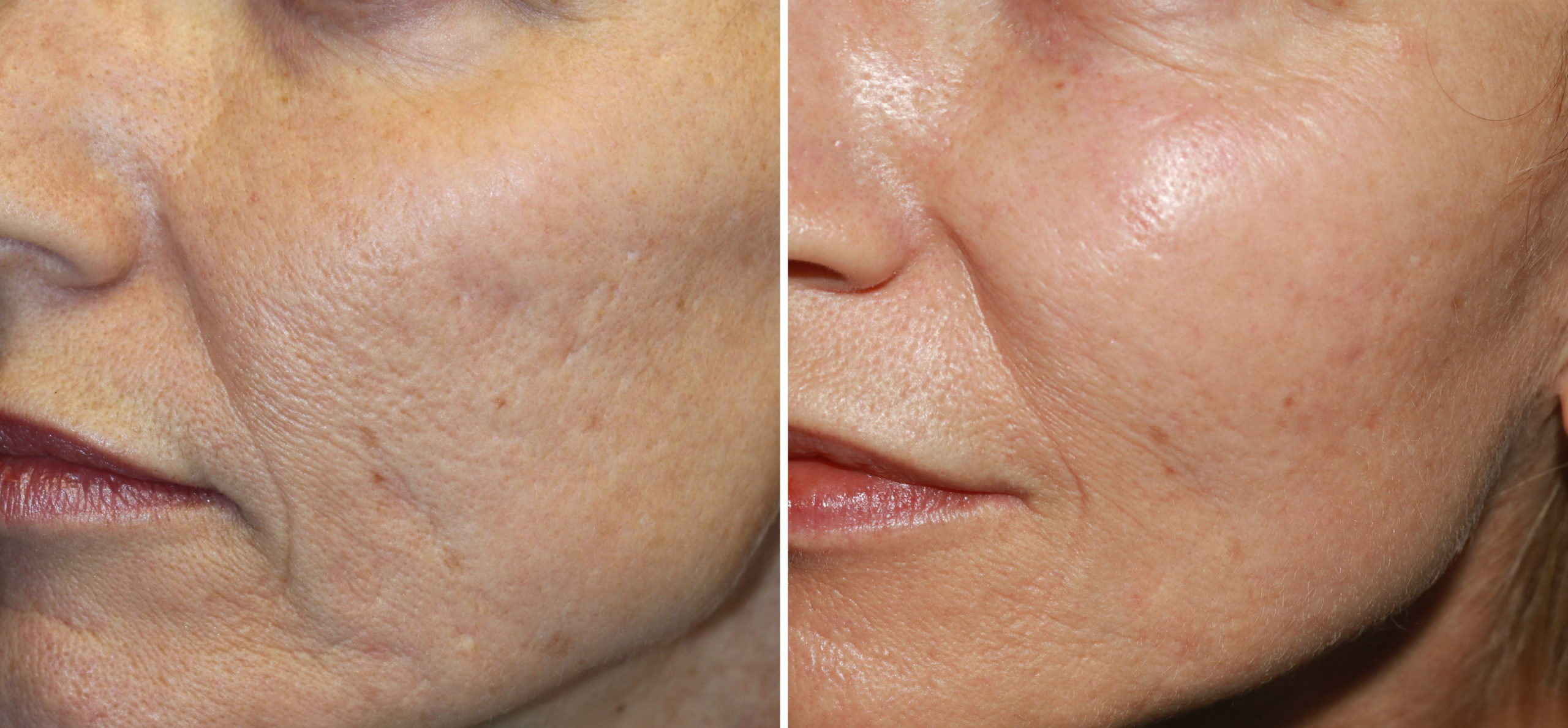
Microneedling: Insights and Key Information
Personalized Microneedling Solutions at Thornhill’s Wilderman Cosmetic Clinic: Your Path to Flawless Skin
What is Microneedling? Minimally invasive skin treatment using fine needles for rejuvenation – Microneedling is a minimally invasive cosmetic procedure designed to improve the texture, tone, and overall appearance of the skin. During microneedling, a device …
Microneedling Recovery: Healing Stages – Microneedling, also known as collagen induction therapy, is a minimally invasive cosmetic procedure that involves using tiny needles to create controlled micro-injuries on the skin’s surface. This process stimulates …
Microneedling for Acne Scars: Benefits, Treatment, Risks, Results – Acne scars can leave a lasting impact on one’s self-esteem and confidence. Countless individuals struggle to find effective treatments that can diminish the appearance of these scars.
Microneedling for Burns: A Promising Treatment for Scar Reduction – Burn injuries can be not only physically painful but also emotionally distressing, often leaving lasting scars that serve as a constant reminder of the trauma. While there are various treatments available, microneedling has …
Microneedling vs. Laser Skin Resurfacing: Pros, Cons, and Takeaway – In the quest for radiant, youthful skin, microneedling and laser skin resurfacing have emerged as two popular options. Both treatments aim to address a wide range of skin concerns, from wrinkles and fine lines to …
Stay Ahead of the Beauty Curve
Beyond Beauty: Elevate Your Routine with Insider Tips and Breakthroughs – Subscribe Now!
Transform your beauty routine into something extraordinary!

